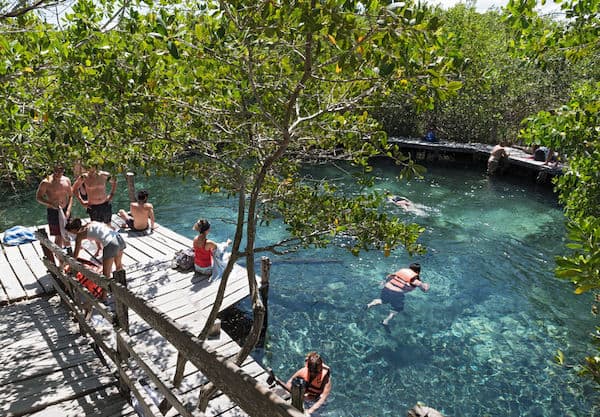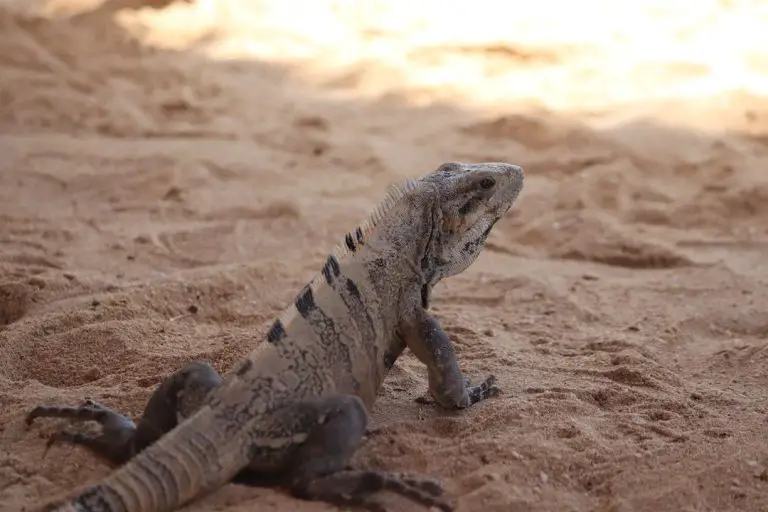Bugs and Insects in Cancún: Should You Be Worried?

When planning a vacation, especially to a destination as luxurious as Cancún, you don’t want to think about any pests that could ruin your trip. However, assuming you won’t see any bugs outright may not be the best idea either, as then you won’t have the insect repellant you need. What kinds of bugs and insects should you expect in Cancún?
Cancún, like many other parts of the world, does have bugs and insects. Most notably, mosquitoes, tabanos, chakistes, agua mala, and African bees are attracted to the warm weather here. Most of these bugs don’t deliver fatal bites or stings, but do act as a nuisance nonetheless.
To get yourself ready for the winged critters may encounter on your Cancún trip, we recommend you keep reading. In this article, we’ll explain more about which bugs live around here, what conditions may increase their presence, and what to do if you get bitten or stung. You won’t want to miss it!
Which Bugs and Insects Are in Cancún?
Mosquitoes
You may be able to leave most of your troubles behind on your trip to Cancún, but mosquitoes won’t be one of them. These troublesome critters, of which their species count may exceed 3,500, could swat around you and leave you with big, itchy, red bites for your troubles.
Tabanos
The Tabano is another word for a horsefly, which belongs in the Tabanidae family. These oversized bugs can fly quite well despite their size. Like mosquitoes, horseflies feed off blood, either from people or animals.
Chakistes
The species of gnats in Cancún are called chakistes. While they’re more annoying than anything, in some parts of Mexico, it’s possible to find much more aggressive chakistes with the biting and attacking propensity to that of a mosquito. They could even fly through some mosquito nets or screens!
Agua Mala
The agua mala is a type of Mexican sea lice that lingers in the water. They can sting you if you get too close, causing a hive that many manifest hours after the encounter. If you know what they look like, it’s not too difficult to spot the agua mala. They resemble inflated balloons and may have a blueish or purpleish color while otherwise remaining translucent.
African Bees
The killer bee or African bee is another one to be on the lookout for. These don’t have an appearance all that different to the bees you’ve seen back in the United States, but they do tend to go to further lengths to get to you than other bees.
For instance, Africanized bees may venture as far as 400 meters in pursuit of the same person, and they have been known to cause deaths in about 1,000 people. Since the Yucatan Peninsula (on which Cancún is located) has a governmental initiative in place to keep African bees contained, if you see one, it’s best to get away and don’t try to hurt or kill the bee.
What Kinds of Conditions Cause These Critters to Come Out?
Okay, so now you know which insects and bugs you may meet during your trip to Cancún. We always say “may” because there are no guarantees. Some travelers may have bad luck with insects while others can go to Cancún–sometimes even multiple times–without running into any bugs even once.
Regardless, by being aware of which conditions may trigger more insects and critters to come out, you can start taking precautions. Here’s what you need to know.
The jungles that surround Cancún are the perfect environment for mosquitoes. While these blood-sucking insects can survive in a variety of conditions, their favorites are wet ground, weeds, tall grasses, marshes, and forests.
Mosquitoes don’t do well in very cold conditions, though. Considering Cancún’s Caribbean coast rarely dips below 49 degrees Fahrenheit, that’s likely not cold enough to kill off mosquitoes. You can expect them throughout the year, then.
As for horseflies or tabanos, they will not appear at night or in shady, dark places. If you’re in an especially sunny area, such as the beach, then your risk of coming into contact with a tabano may increase.
Within Cancún, chakistes generally aren’t very problematic, as we said before. They favor some climates and seasons over others, but they don’t like sun movements or changes in the wind, so you can lose them that way.
The agua mala manifests in Cancún’s waters most often between April and June. By avoiding the waters then, you can steer clear of this sea lice.
If you’re worried about African bees because of their tracking tendencies, you aren’t likely to come across many of these bees in Quintana Roo (the state in which Cancún is), as they’re not found here. That said, should you venture outside of Cancún to other parts of the Yucatan Peninsula, there’s no guarantee you won’t encounter an Africanized bee.
How to Avoid Bugs and Insects on Your Cancún Getaway
Besides knowing where the above insects most like to propagate, you can also make some changes in how you dress and what you do if you want your Cancún trip to be bug-free.
Here are some tips to follow.
Stick Within Urbanized Areas
Your risk of being bitten by both tabanos and mosquitoes goes up when you venture too far away from urbanized areas. That’s not to say you can’t explore these if you truly want to, but you definitely should always wear shoes. Even some hotel lawns are not safe to step on barefoot, as they could be home to Africanized bees and other insects you don’t want to meet.
If you have Koba or the Ruinas del Rey on your itinerary while visiting Cancún, remember these ruins are surrounded by dense, thick jungles. Yes, the ruins themselves are in clearings, but you’ll have to pass a lot of vegetation before you get there. Be safe!
Rely on Insect Repellant
It doesn’t matter where you go on vacation, insect repellant is still your best bet to combat mosquitoes, horseflies, gnats, and other bugs eager to ruin your trip. Spray or otherwise apply the insect repellant to your skin and encourage all your fellow travelers to do the same.
Follow the directions on your insect repellant, reapplying as necessary every couple of hours.
Limit Exposed Skin
The more skin you show, the more there is for bugs to feast on. While the weather is probably going to be warm and even humid during your Cancún trip, dress wisely. If you know you’ll be hiking or exploring jungles, then you want to wear long sleeves, pants, and closed-toe shoes with socks. A scarf or a turtleneck shirt aren’t a bad idea, either.
Try a Mosquito Screen
If you can hear bugs buzzing outside of your hotel or wherever you’re chilling, a mosquito screen could ward them off. Remember, with some chakistes, they can easily bust through your mosquito screen and even a net if you set one up. Still, it’s better to have than have not in this situation.
Shower After Swimming
This tip is useful for avoiding agua mala, but it’s also a good rule of thumb. Whether you spend the day in your hotel pool or exploring any of Cancún’s stunning, crystal clear oceans, you want to shower when you’re done swimming.
If you can’t get back to your hotel right away due to distance, then a rinse at a beach shower should suffice. You do want to be thorough, getting beneath your swimsuit. Also, focus on pubic hair, underarms, and any other places where you have a lot of body hair. Don’t forget to clean inside your belly button as well.
Stay Calm Around Insects
If your first inclination when you see a bug is to run, you’re going to have to retrain yourself. Around the African bee especially, your flailing about or running could be seen as an act of aggression to the bee. That could begin their hunt to find you and sting you.
This is often an issue for my girls. At the first site of a bee they will panic and run away. Their reaction is understandable and I’m trying to help them overcome this fear and stay calm around these flying insects.
Should you come across an Africanized bee during your Cancún trip, slow down your walking pace and remain calm. Keep your hands by your sides, even if the bee gets close. This may be really hard to do in the heat of the moment, but it’s important. Most of the time, the African bee will likely stop caring about you and move on to someone or something else if you’re not moving. You can then get to safety.
What to Do If You Get Bitten or Stung on Your Vacation
Let’s say the worst has happened and you ended up bitten or stung by an insect while in Cancún. Is this considered a medical emergency? Not in most instances, unless you’re allergic. In that case, then bypass all the information in this section and seek professional medical assistance immediately. Here’s another article we wrote about being sick in Cancún.
Otherwise, here’s what to do to treat a bug bite or sting.
Mosquito Bites
A mosquito bite is a raised bump. You have many options for reducing the itchiness, and scratching is not one of them. You can take a spoon, apply it to a heat source, and place it directly over the bite, keeping it there for several seconds or longer.
You may also make a paste of baking soda and put it on the bite. Antihistamines can reduce swelling, as can an ice pack or cold compress. A hydrocortisone cream or calamine lotion may lessen itching, too.
Horsefly Bites
If a tabano got to you, then again, it’s crucial you don’t itch or scratch the bite. You could get an infection and worsen its severity by scratching. Instead, you want to use an ice pack or cold compress like you would with a mosquito bite. You can also try warm water and soap on the bite, which may help with itchiness.
Chakiste Bites
Within Cancún’s borders, a bite from a chakiste or gnat shouldn’t derail your plans in the slightest. You’ll feel a little itchy, but this doesn’t last for a long time. Once again, you can use antihistamines, anti-itch creams, a cold compress, or water and soap to alleviate the itchiness, pain, and discomfort. By raising the limb affected with the bite, you may notice your symptoms aren’t as bad.
Agua Mala Stings
If you missed an agua mala in the water and it stung you, then you want to get out immediately. While you may not see any hives for several hours, by cleaning yourself off now, perhaps the effects of the bite won’t be as bad.
Once you’ve washed up, head to a Cancún drugstore or pharmacy to pick up either soyaloid polvo or Logoderm. The former is a type of poultice that you should use two times every day for less itchiness. Logoderm is simply a cream with cortisone in it that can lessen your itchiness.
African Bee Stings
More than likely, when the Africanized bee stung you, they left their stinger at the site. You want to take this out as soon as you can or have someone else do it for you. Then, with warm water and soap, clean the sting site.
Between anti-itch medications, NSAIDs, and ice packs, most of your pain and itchiness should be ameliorated. That said, it’s only recommended you go the over-the-counter route if you were stung once. Since African bees can sting dozens of times at once, if such a thing happened to you, then you must go to the hospital or otherwise seek medical treatment.
Conclusion
Cancún has its fair share of bugs and insects, among them mosquitoes, tabanos (horseflies), chakistes (gnats), agua mala, and African bees. While you might not see any of these bugs during your trip, it’s still best to be ready to combat them with screens, insect repellant, long clothing, and a calm attitude. Best of luck!









